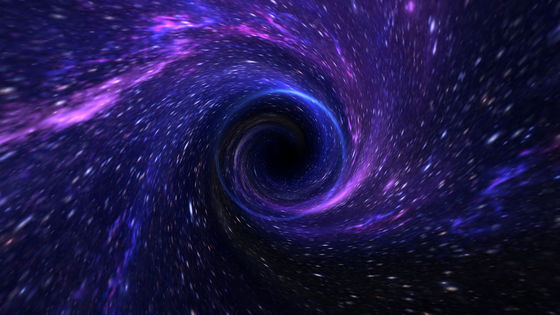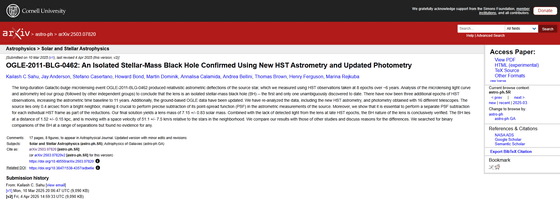Astronomers confirm the existence of the first ever 'single, non-binary black hole'

Astronomers have concluded that the first candidate for a 'solo black hole,' which was discovered in 2022 and caused quite a stir, is definitely a solo stellar-mass black hole, based on new observations from the Hubble Space Telescope.
[2503.07820] OGLE-2011-BLG-0462: An Isolated Stellar-Mass Black Hole Confirmed Using New HST Astrometry and Updated Photometry

Yes, there really is a black hole on the loose in Sagittarius
All black holes discovered so far have been binary systems with companion stars, except for the supermassive black holes at the centers of galaxies .
In 2022, a joint research group including Osaka University, University of California, Berkeley, Space Telescope Science Institute, NASA, and the University of Warsaw discovered an object that is a candidate for a 'solo black hole.'
Discovering a solo black hole candidate - ResOU
https://resou.osaka-u.ac.jp/ja/research/2022/20220610_4

The object in question was discovered in 2011 by the Microlensing Observations in Astrophysics (MOA) research group led by Professor Takahiro Sumi of the Graduate School of Science at Osaka University, as a microlensing event named MOA-2011-BLG-191. At the same time, the Optical Gravitational Lensing Experiment (OGLE) research group in Chile also discovered the object as OGLE-2011-BLG-0462.
Less than 1% of microlensing events are caused by black holes. However, based on data from MOA, OGLE, and the Hubble Space Telescope, Kailash Sahu and his team at the Space Telescope Science Institute claim that the object in question is a 7.1 solar mass black hole located about 5,153 light years away.
Meanwhile, a team from the University of California, Berkeley estimated the object to be between 2,280 and 6,260 light years away, with a mass between 1.6 and 4.4 solar masses. Because it is believed that 2.2 solar masses are needed for the remnants of a dead star to become a black hole, the UC Berkeley team's conclusion means that they cannot rule out the possibility that the object in question is a neutron star.
The new data was published by Sahu and his team. They combined observational data from the Hubble Space Telescope in 2021 and 2022, and data from the Gaia space telescope, which has been used to observe the Milky Way until January 2025. They found that the mass of the object in question is about 7 solar masses, with an error of 0.8 solar masses, so the uncertainty has been halved.
'For now, this is the only known solitary black hole,' Sahu said, adding that he hopes to discover more solitary black holes using the Nancy Grace Roman Space Telescope , due to launch in 2027.
Related Posts:
in Science, Posted by logc_nt







